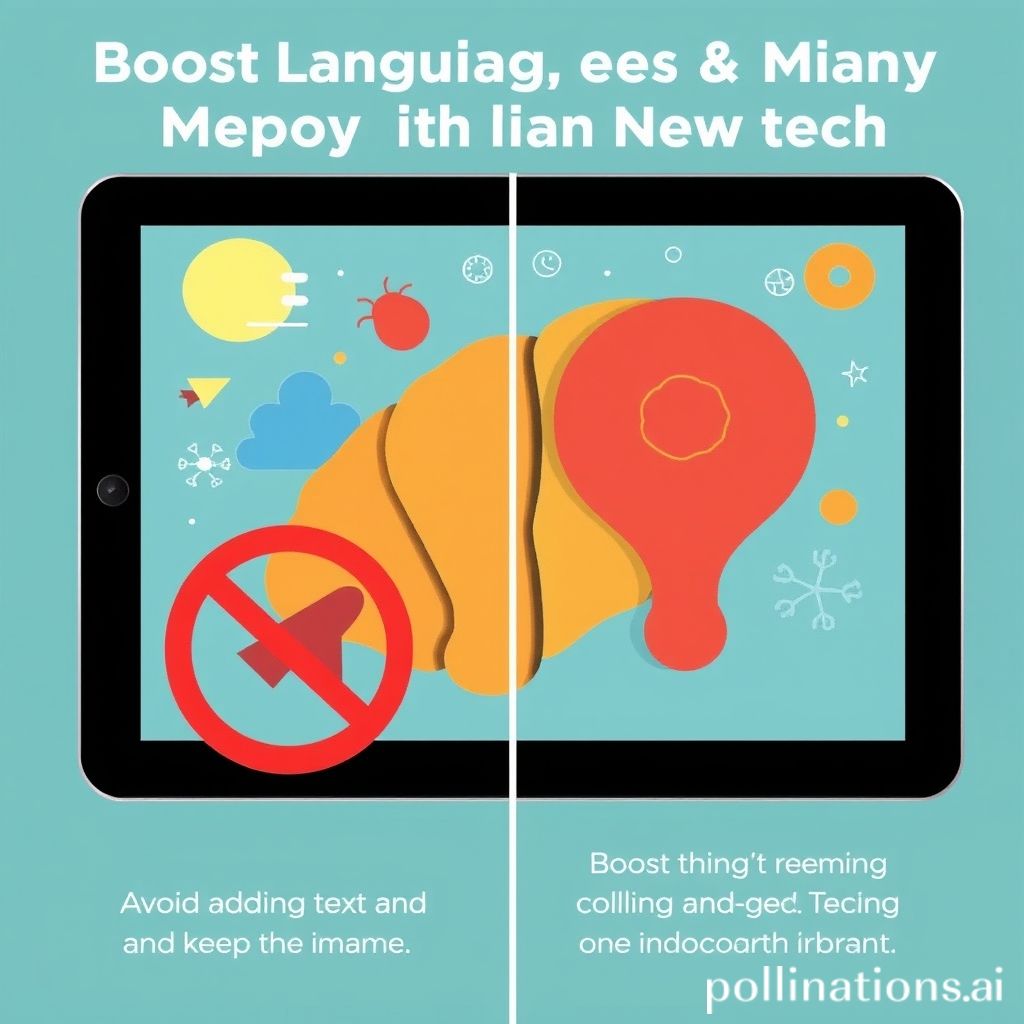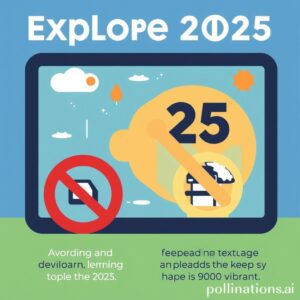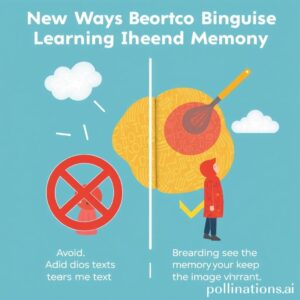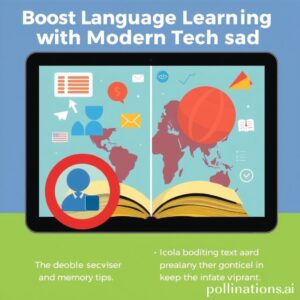Today’s Advancements in Language Learning and Memory Enhancement
Estimated reading time: 5 minutes
- Try AI Tools: Use apps like Duolingo for fun learning.
- Explore VR Learning: Check out VR experiences for immersive language practice.
- Play Learning Games: Look for fun educational games that keep you motivated.
- Learn a Bit at a Time: Break lessons into small chunks for easier learning.
- Embrace Culture: Learn about the culture behind the language you are studying!
Table of Contents
- Introduction
- Exciting Advancements in Language Learning
- Memory Enhancement Advancements
- Conclusion
- FAQ
Introduction
Hey there! Today, we’re diving into the exciting world of advancements in language learning and memory enhancement. In 2025, things are changing fast, and they’re as exciting as finding an extra cookie in a jar! With cool new technologies and smarter ways to learn, everyone can now learn languages and boost their memory better than ever before. So, let’s explore these breakthroughs together!
Exciting Advancements in Language Learning
1. AI-Driven Tools
Imagine a robot friend who helps you learn a language! AI (which stands for artificial intelligence) is like that robot buddy. It helps you by giving feedback as you practice your pronunciation, just like a teacher would. Tools like TALKIO and apps like Babbel and Duolingo are making language learning fun and personal. They can talk back to you and make learning feel like playing a game—because who doesn’t love games?
2. Immersive Technologies
Have you ever wished you could walk around a place while learning a new language? With Virtual Reality (VR) and Augmented Reality (AR), you can! These technologies let you pretend to order food in a restaurant or explore famous places while speaking Mandarin. It’s like being in a magic world where you learn and play at the same time. This sort of practice helps you remember words better and gives you confidence when speaking! Check it out!
3. Gamification
Picture this: you’re a knight on a quest to save the kingdom, and along the way, you have to solve puzzles about vocabulary and grammar! Gamification is all about turning learning into fun adventures. When you earn points and rewards, you feel like a superhero. This makes learning languages exciting and helps you remember what you’ve learned much better. More details here!
4. Microlearning and Adaptive Learning
Learning doesn’t have to be long and boring! Microlearning is like eating small pieces of cake instead of swallowing a whole cake at once. Lessons are split into tiny chunks, so you can learn a little bit whenever you want—like during snack time! Adaptive learning is smart and changes what you learn based on how fast or slow you are learning. Learn how it works!
5. Cultural Competency and Global Trends
Understanding a new language isn’t just about words; it’s also about the culture! Learning about the customs and traditions helps you connect better with people. Plus, more and more folks want to learn languages like Mandarin because it’s super useful in today’s world. Learning about different cultures makes learning a language like going on a giant treasure hunt! Check out this link!
6. Expanding Accessibility
No matter where you are, you can learn a language! Online classes and hybrid programs make it easy for anyone, anywhere, to join in and start learning. This way, if you want to learn Chinese characters or calligraphy, you can do it without even leaving your house! Plus, there are short courses for those who just want to dip their toes into learning without signing up for a whole marathon. Learn more about it!
Memory Enhancement Advancements
1. Cognitive Training and Neuroplasticity
When you learn a new language, your brain becomes like a superhero with special powers. Studies show that learning languages helps create new connections in your brain. Imagine building a really cool LEGO tower that keeps getting bigger every time you learn something new! This is called neuroplasticity. Learning more languages makes your brain faster and smarter! Read more here!
2. Bilingualism and Cognitive Benefits
Being bilingual is like having a magical key that opens up new doors in your brain! Bilingual kids are superstars when it comes to focusing and remembering things because they shift between languages like athletes changing gears. Plus, for older folks, talking two languages can help keep the mind sharp! Check out this awesome info!
3. Technological Innovations in Memory Storage
Have you ever played with a really fast computer? New tech, like high-bandwidth memory, helps computers work quickly and saves information like a wizard storing treasures in a magic box. These advancements can also help improve how memory works in our brains so we can learn better! Learn about the tech here!
4. Edge AI and Memory Utilization
Edge AI is like having a little helper on your phone that makes sure everything runs fast and smooth! This helps with remembering things too. When your device processes things faster, it’s like cleaning up your playroom so you can find your favorite toy quickly—and we love quick finds! More details here!
5. Long-Term Training Effects
Just like watering a plant makes it grow over time, learning languages and using memory-focused training gives your brain a workout! It can help people stay sharp even as they get older or recover from injuries. Keeping our minds active is super important—like practicing your favorite dance moves to impress everyone! Understand more here!
Conclusion
Technology, fresh ideas, and a world of adventure are making language learning and memory enhancement super fun and effective in 2025! Whether you’re using AI tools, jumping into a VR adventure, or playing games while learning, there are exciting ways to improve your skills. Here at LCC Academy, we believe that everyone can learn a language, understand cultures, and expand their memory with joy and laughter.
FAQ
Q: What are some effective tools for language learning?
A: Some effective tools include TALKIO, Duolingo, and Babbel.
Q: How does VR enhance language learning?
A: VR enhances language learning by providing immersive experiences where learners can practice speaking in realistic scenarios.
Q: What is microlearning?
A: Microlearning involves breaking down lessons into small, manageable chunks for easier and more effective learning.



